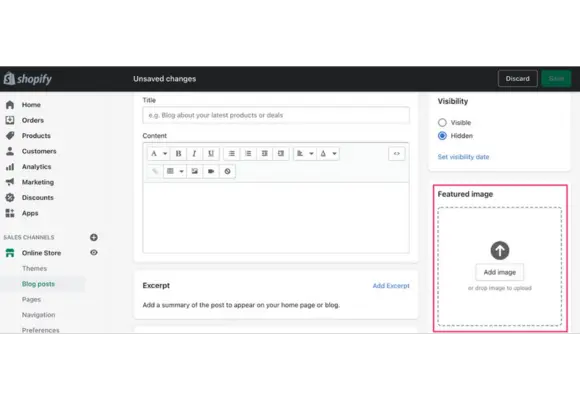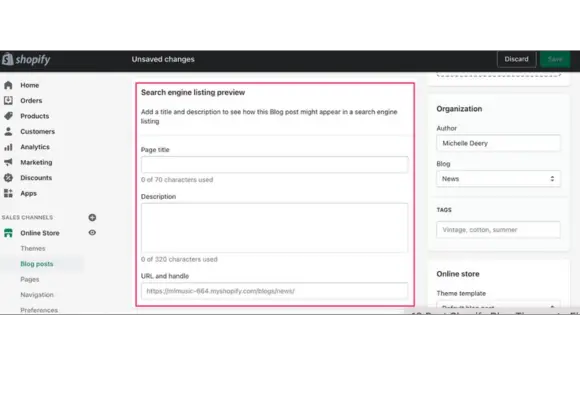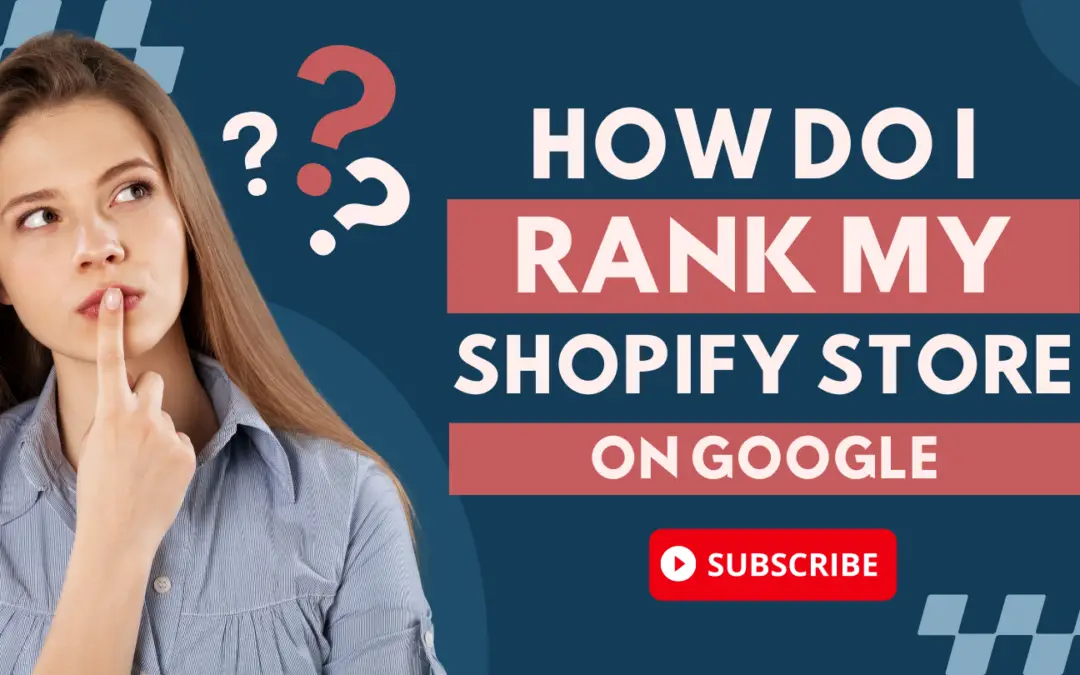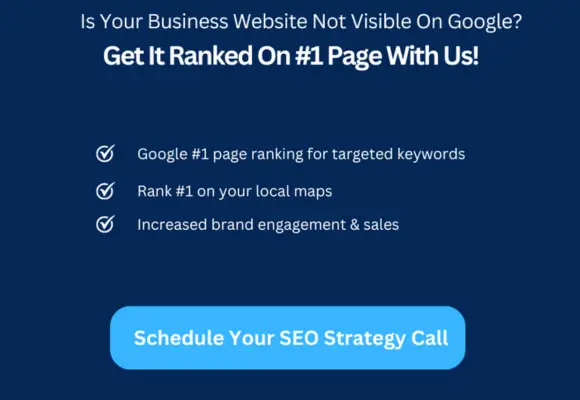Dominate the digital marketplace and watch your sales soar! Did you know that in 2024, nearly 81% of shoppers begin their product searches online? That’s a massive audience waiting to discover your Shopify store. But with millions of online businesses competing for attention, how do you ensure your store ranks high on Google searches and reaches those eager customers?
This comprehensive guide unlocks the secrets to SEO mastery for your Shopify store. We’ll delve into powerful strategies that go beyond simply throwing keywords at your website. Learn how to structure your content, optimize product pages, leverage compelling visuals, and craft a winning keyword strategy that propels your store to the top of search engine results.
Boost your Shopify store’s Google ranking with these key SEO steps:
- Optimize content structure: Clear hierarchy and internal linking help search engines understand your site.
- Prioritize user experience: Fast loading times and mobile-friendliness are crucial.
- Target relevant keywords: Research phrases potential customers use to find your products.
- Optimize product pages: Include clear titles, descriptions, and high-quality images.
- Build backlinks: Earn links from reputable websites to your store.
- Create valuable content: Blog posts and informative guides establish your expertise and attract visitors.
- Utilize SEO tools: Leverage apps to simplify tasks and track your progress.
Remember: SEO is an ongoing process. Consistency and adapting to best practices are essential for long-term success.
1. Set Up the Right Tracking and Indexing Tools for Your Shopify Store SEO
You must implement specific strategies to ensure that your Shopify store climbs the Google ranks and maintains its store rank.
To achieve lasting success on Google, consider implementing effective SEO strategies for your Shopify store. I suggest implementing the following techniques to maintain a strong presence and improve your store’s ranking.
Set up your Shopify store’s tracking and management tools to execute this strategy effectively.
Using these essential tools, you can analyze your store’s performance and pinpoint areas for improvement, ultimately propelling your Shopify store toward higher Google rankings.
Effective tracking enables you to monitor your store’s traffic and reply promptly to customer behaviors, which is vital for SEO.
With the right tools, you can uncover valuable user behavior insights. This knowledge empowers you to refine your SEO strategies and target areas prime for improvement.
Additionally, proper indexing is integral to helping your Shopify store appear in search results. Guarantee accurate Google indexing of your Shopify store with the right tools. Boosting your store’s visibility and reaching potential customers is crucial for success.
Unleash the power of data-driven decisions for your Shopify store’s SEO. By utilizing the right tracking tools, you gain valuable insights into your current performance, which informs your strategic choices.
With real-time insights, you can continuously refine your SEO strategies, keeping your Shopify store ahead of the curve.
High-quality SEO tools empower Shopify stores to dominate their niche. Ranking success becomes significantly more manageable with them.
These tools should offer a comprehensive suite of features covering most aspects of SEO management.
From keyword tracking to backlink analysis, the right tools should give you an all-encompassing view of your Shopify store’s ranks based on the factors influencing Google’s ranks.
The ever-evolving landscape of SEO best practices demands staying informed about the latest strategies to keep your Shopify store competitive.
By promptly applying these strategies and monitoring their impact using your chosen tracking tools, your Shopify store will be well-positioned to achieve a favorable rank on Google.
More than simply having a Shopify store is needed. To thrive in today’s competitive landscape, harness the power of SEO tools and strategies to propel your store toward success.
Optimizing your Shopify storefront’s tracking and indexing for SEO is most important to achieving the desired rank in Google. So, respond to the data, refine your strategies, and see your Shopify store soar in the Google rankings.
Consider exploring Semrush https://www.semrush.com/lp/semrush-seo-tools-4/en/ to elevate your Shopify store’s SEO efforts. This powerful tool offers a comprehensive suite of features, making it a valuable asset in your SEO journey.
Disclosure: This post contains an affiliate link.
1.1 How to Ensure Your Shopify Store Is Google-Friendly with Proper SEO Tools
Unlock superior discoverability for your Shopify store. Powerful SEO tools within the ecosystem empower you to optimize navigation and search engine accessibility.
By implementing effective SEO strategies, your optimized eCommerce website can climb the ranks of Google’s search results and reach a wider audience.
SEO is more than a mere buzzword; it’s a meticulous practice that your Shopify store must adopt to thrive in the competitive digital landscape.
Craft high-quality, relevant content that attracts search engines and positions your website as a valuable resource.
SEO is the key to unlocking higher Google rankings for your Shopify store. This guide will equip you with the knowledge to leverage the right tools and optimize your website for search engines.
Strategic keyword implementation throughout product pages, blog posts, and descriptions positions your Shopify store to compete effectively in the dynamic Google Shopping landscape.
Emerge from the shadows of search engines and reveal your Shopify store’s hidden potential. SEO tools meticulously analyze your website, pinpointing areas for improvement in metadata, alt text, and page speed, propelling you toward higher search engine rankings.
These improvements bridge the gap between your Shopify store and search engines, transforming your platform from a passive website into a dynamic, Google-friendly entity.
Avoid SEO pitfalls by seamlessly integrating Google’s best practices into your website. This ensures that search engines crawl and index your Shopify store smoothly.
The Branding Agency recommends using these tools to implement a strategic mix of on-page and off-page SEO tactics. This approach will prime your Shopify store for a strong presence in Google’s search results.
Optimizing your website for SEO may seem overwhelming, but the payoff in search visibility and user traffic is substantial. Following the SEO guide and aligning your Shopify store with search engine algorithms will significantly boost your e-commerce efforts.
Leveraging powerful SEO tools goes beyond website optimization. It empowers you to deliver a superior user experience for your customers and establish a more substantial digital presence on Google.
Whether refining your website’s structure for Google or ensuring that SEO becomes a cornerstone of your online strategy, your Shopify store’s ascension in search rankings is inextricable from your diligent application of SEO tools.
Practical SEO tool usage is key to propelling your Shopify store up search rankings. To improve your website’s search engine ranking, optimizing its structure for Google and making Search Engine Optimization (SEO) a central component of your online strategy is important.
Solidify SEO as a cornerstone of your Shopify store’s success strategy. By leveraging comprehensive SEO tools and best practices, The Branding Agency empowers your store to climb the ranks and stand out amongst the online competition. Effective SEO is a proactive approach that ensures your store aligns with search engine criteria for optimal visibility.
2. Optimize Your Shopify Store Structure to Boost SEO
A well-organized site structure is crucial for SEO success in your Shopify store. Search engines reward websites that provide exceptional user experiences, and a logical blueprint of your store’s pages can be incredibly beneficial.
A clear structure aids search engines in understanding and indexing your store’s content. Integrating relevant keywords into your store’s page titles and descriptions informs search engines about the nature of your pages, and this systematic approach can have a tremendously positive impact on your store’s SEO.
Moreover, structuring your Shopify store with intuitive navigation ensures that search engines can crawl through your pages efficiently and elevates the overall experience for your customers.
Each page should serve a clear purpose as you contemplate configuring your store’s pages. Please optimize every page, from your homepage to your contact page, keeping the user and search engines in mind.
By ensuring that your store’s structure makes sense logically, you’re streamlining the path for search engines to index your store’s content, thereby enhancing your chances of ranking higher.
Strategic internal linking is among the most crucial tips in optimizing your store’s SEO. Organizing your store’s pages into a clear hierarchy and structure helps search engines distribute page authority effectively across all pages.
Another helpful tip is to create a sitemap for your store, which acts as a roadmap for search engines when they analyze your store’s pages.
Remember, your store’s SEO success hinges upon how well search engines can navigate and interpret your pages, so put adequate thought into your store’s structural design.
Neglecting mobile optimization is no longer an option; it’s fundamental. With most searches originating from mobile devices, your store must deliver a flawless mobile experience. Similarly, your SEO strategy requires constant evolution.
Stay informed by following reputable SEO authorities like The Branding Agency to keep your tactics relevant and impactful.
Structure reigns supreme in SEO optimization. Your store must effectively cater to both users and search engines. Prioritize tips that enhance page quality and logical information flow.
Implementing this feature can increase your store’s visibility and make it easier for search engines to discover it. As you implement these strategies and refine your pages, you’ll witness a significant improvement in your store’s SEO performance.
Start Your Shopify Journey Today: Optimizing your Shopify store’s structure is crucial to SEO success. Thankfully, getting started with Shopify is easier than ever. They offer a free trial: https://www.shopify.com/free-trial, allowing you to test the platform and experience its functionalities firsthand. After your trial, you can seamlessly transition to a paid plan, with the first month costing only $1.
2.1 Tips to Improve Your Website Structure for Better Shopify SEO
Optimizing your website’s structure is vital for ranking your Shopify store well on Google. A clear structure enhances user experience and helps search engine crawlers understand and index your content, boosting your store’s ranking.
To begin, select a theme optimized for mobile devices and SEO. This foundational step ensures that your Shopify store will resonate well with the algorithm updates that Google frequently rolls out.
As you consider your store’s hierarchy, prioritize logical and straightforward navigation. Categories should be distinct and descriptive, allowing for an intuitive browse-and-find experience for your customers.
By providing detailed and relevant information about your Shopify store, you can help Google better understand your content and improve your store’s ranking.
Craft compelling, keyword-rich meta titles and descriptions for each page. This meticulous approach is crucial for boosting your store’s visibility in Google’s SERPs.
Naturally, integrate relevant keywords throughout your copy, prioritizing those that resonate with your target audience. Avoid keyword stuffing to ensure a smooth reading experience and optimal SEO performance.
Let’s remember the importance of high-quality, valuable content. Content is king and a cornerstone of any Shopify store’s SEO strategies.
Google’s algorithms are sophisticated in identifying beneficial and informative content; thus, a well-thought-out content strategy is vital in optimizing your store for SEO.
Make sure to look into internal linking within your Shopify store. In addition to aiding in navigation, implementing this technique helps improve your store’s SEO by distributing link equity across your website.
An internal link structure should seamlessly connect your users to relevant products and content, signaling to Google’s crawlers the importance and relevance of pages within your Shopify store.
Remember that while the visual appeal of your store’s website is significant, the backend structure must be solid for Google to rank your Shopify store effectively.
Sluggish load times can negatively impact SEO, so choosing a lightweight theme that corresponds with the performance demands of modern SEO standards is critical.
Like constructing a building, your website’s infrastructure is invisible to the eye, yet it is the cornerstone of the success of search engines.
For lasting success on Google, prioritize a well-structured website foundation for your Shopify store. Stay informed about SEO’s ever-changing landscape, and implement these practical strategies. Witness your commitment to website optimization translate into significant improvements in your store’s search engine ranking.
The dedicated execution of these SEO strategies positions you to achieve a powerful trifecta: increased website traffic, boost conversions, and a competitive edge in the digital marketplace.
Streamline Your Product Sourcing:
Optimizing your Shopify store’s website structure is crucial for SEO success. A well-organized website enhances user experience and helps search engines understand and index your content effectively.
While focusing on technical aspects is essential, consider exploring solutions like Spocket to streamline product sourcing.
Spocket offers a 7-day free trial (https://spocket.partnerlinks.io/RankShopifyGoogle), allowing you to experience the benefits of their service firsthand. This can be particularly helpful if you’re starting your Shopify journey and want to explore various product options.
3. Enhance Your Shopify SEO with Optimized Images and Content Updates
Boosting your Shopify store’s search engine rankings demands a strategic SEO approach that involves refining consistent content and visual elements.
By optimizing images, you ensure your store’s visual content is not only appealing but also search-engine-friendly.
Alt-tags, which describe the content of images, are essential as they enable search engines to understand your store’s visual content, enhancing its overall SEO performance.
For optimal SEO and user experience, ensure your Shopify store’s images have:
Compressed file sizes: Faster loading times keep visitors engaged.
Descriptive, keyword-rich filenames: Identify the product or scene, aiding search engines and users.
Remember, search engines, while visually blind, can understand and index your store’s images based on this text-based information.
To remain relevant and engaging, you must regularly update your store’s content alongside visual enhancements. Fresh content signifies to search engines that your store is active and provides up-to-date information to customers.
Audit your store’s content periodically to ensure accuracy, and don’t shy away from refreshing product descriptions with new keywords that align with the latest SEO trends.
When revamping content, consider the depth and value offered to your visitor as a significant SEO ranking factor.
Content that addresses customer queries incorporates relevant keywords and provides comprehensive information regarding your products can significantly impact your store’s rank.
Effective SEO isn’t static; it’s a continuous endeavor where content optimization plays a pivotal role. Employing a consistent content strategy that includes blog posts, how-to guides, and the integration of customer testimonials can bolster your store’s authority and search engine visibility.
Curating SEO-rich content is an art that requires balancing the use of targeted keywords without compromising the natural flow of the text, making your store an invaluable source of information for both your customers and search engines.
As you refine your store’s SEO strategy, remember that optimizing for high search engine visibility is multifaceted.
An efficient SEO campaign for your Shopify store goes beyond mere keywords; it comprehensively improves user experience through fast-loading images and well-informed, regularly updated content.
The key is maintaining a shopper-centric approach while aligning your store’s digital footprint with search engine criteria to rank web pages.
The Branding Agency empowers your Shopify store to thrive in the ever-evolving digital landscape (2024) through our expertise in SEO best practices. We help you achieve top rankings and gain a competitive edge.

3.1 A Guide to Optimize the Visual Elements of Your Shopify Store
When aiming to rank your Shopify store on Google, it’s essential to recognize that images play a vital role in customer engagement and SEO optimization.
Visual elements captivate customers, keeping them on your Shopify store longer. Each image should be carefully selected and optimized to ensure that you rank your Shopify store effectively.
This comprehensive guide provides actionable advice to help optimize your Shopify store’s imagery for maximum impact.
A critical first step to ranking your Shopify store is ensuring every visual element aligns with your branding and speaks to your customers.
High-quality images resonate with customers, increasing their time spent browsing your Shopify store. Remember, the longer customers linger, the better your SEO performance, as search engines interpret this as a sign of quality content.
Not only do these images captivate your customers, but they also play an important role in search results.
Optimizing your Shopify store images requires a strategic approach. File names should be descriptive and include targeted keywords that reflect your content.
Alt text is another important SEO aspect of images. It enhances accessibility for customers who rely on screen readers and serves as a content clue for search engines.
Balancing visual quality and file size is crucial for page load times, a core component of SEO that impacts how high your Shopify store will rank on search results.
Regular content updates signal to search engines that your Shopify store is active and relevant.
Fresh content and regularly updated images boost your store’s perceived value, enticing customers to return.
It’s also wise to guide your customers through your content with descriptive and keyword-rich captions, which will enhance their experience on your Shopify store.
Let’s pay attention to the importance of mobile optimization. Most searches occur on mobile devices, meaning your Shopify store’s images must be responsive and display correctly on various screen sizes.
Ensuring a smooth customer experience and implementing good SEO practices can positively impact your website’s rankings.
Finally, harness the power of SEO tools to track the performance of your visual content. These tools can highlight areas for improvement, enabling you to fine-tune your approach and climb higher in the search rankings.
After all, the goal is to optimize every aspect of your Shopify store, making it irresistible to search engines and customers.
Understanding how to leverage images is a critical part of your SEO guide.
Staying vigilant in your optimization efforts ensures that you provide value to your customers and maintain your Shopify store’s rank on Google.
Stamped.io: Empowering Ecommerce Growth Through Reviews and Loyalty
Stamped.io transcends the boundaries of a simple review management platform. It is a comprehensive review and loyalty platform to empower your Shopify store’s growth.
Stamped.io, the reviews and loyalty platform designed specifically for eCommerce businesses, can simplify this process and offer a broader range of benefits (affiliate link:https://get.stamped.io/RankShopifyGoogle).
4. On-Page SEO Tactics to Rank Your Shopify Store Higher on Google
Enhancing your Shopify store’s visibility starts with robust on-page SEO, a critical factor for ranking higher on Google.
If you meticulously optimize each element, your Shopify store holds vast potential to climb the SERPs.
Implementing comprehensive Shopify SEO tactics ensures your store’s content aligns perfectly with what search engines value the most.
First, craft relevant and keyword-rich meta titles and descriptions for your store pages. These meta tags should encapsulate the core offerings of your store while naturally integrating SEO keywords, such as ‘your Shopify store’ and ‘rank,’ which are pivotal for your online presence.
Your store’s URL structure also plays a significant role in Shopify SEO. Keep URLs concise, avoiding complex strings that obfuscate content relevance to users and search engines.
Additionally, your store’s on-page content must be diversified using relevant keywords, but remember, keyword stuffing can do more harm than good.
Maintain a delicate balance where keywords like ‘your store’ and ‘SEO’ appear organically throughout the text.
Internal linking within your Shopify store enhances the navigational experience and distributes page authority throughout your site, which is essential for Shopify SEO.
Furthermore, search engines, like Google, crawl these links, so incorporating strategic anchor texts that include terms like ‘Shopify store’ and ‘SEO’ can boost your store’s relevance for those queries.
Alt texts for images, another crucial aspect of on-page SEO, offer a splendid opportunity to include keywords like ‘Shopify store’ and ‘rank’ in a meaningful yet inconspicuous way. This will make your visual content searchable and enhance the overall user experience.
Lastly, ensure your store’s page headings and subheadings include h2 and h3 tags incorporating keywords such as ‘sea’ and ‘your Shopify store’ for optimal ranking.
The key is to facilitate a seamless and informative browsing experience that encourages longer visitor stay times, signaling to Google the value and relevance of your Shopify store.
Regular updates to your content, focusing on relevance and quality, also signal to search engines like Google that your Shopify store is active and provides current information, which can improve your rank over time.
These on-page SEO strategies will fortify your Shopify store’s foundation for SEO success.
It requires patience and persistence, but the payoff for your store’s visibility on Google will prove worthwhile.
The Branding Agency understands these nuances and ensures that your Shopify SEO efforts are calibrated for maximum effectiveness, optimizing your store’s potential to rank higher and attract more organic traffic.
Content Creation Efficiency and SEO Optimization:
Optimizing your Shopify store’s on-page elements is crucial for SEO success. However, consistently creating high-quality, SEO-optimized content can be time-consuming. Tools like Surfer SEO can assist you.
Additionally, Surfer SEO offers a generous 7-day free trial, allowing you to test all its features and experience the benefits firsthand before committing. (affiliate link: https://get.surferseo.com/RankShopifyGoogle)
Surfer provides features like keyword research, content planning, and on-page optimization suggestions, streamlining your content creation workflow and ensuring your content aligns with search engine ranking factors.
4.1 Strategies to Optimize Your Shopify Pages for Enhanced SEO Performance
As you delve deeper into the different aspects of your Shopify store, you realize that you must meticulously optimize every page to speak the language of search engines.
Pages across your site must be infused with relevant keywords, ensuring that your Shopify store’s products surface when potential customers search.
This level of SEO craftsmanship separates a thriving store from one that languishes in obscurity.
To optimize each page of your Shopify store, you’ll need to blend technical know-how and creative SEO strategies.
Let’s unpack the essentials: your Shopify store is a hub of pages – main, category, product, and blog posts – each serving unique purposes but all contributing to your overall sales goals.
Optimizing your pages goes beyond keyword saturation; it’s a thoughtful process that assesses each page and refines title tags, meta descriptions, and headers following SEO best practices.
Consider the power of blog posts, which serve as an excellent SEO catalyst for your Shopify store. These posts shouldn’t just engage readers and rank your Shopify store higher in search engine results through strategic keyword placement.
Sales pages are the cornerstone of your business, and here, Shopify SEO shines brightest when product descriptions are keyword-rich and compelling.
It’s not enough to optimize for the sake of search engine crawlers; your content must also resonate with human customers.
SEO for your Shopify store isn’t a set-and-forget affair; it’s dynamic and requires continuous optimization to keep pace with search engine algorithms.
Tactics such as updating existing content with fresh information and new keywords can give your pages a much-needed SEO boost.
Additionally, regularly adding new pages with valuable content will enhance your Shopify store’s online footprint and contribute positively to its search engine rankings.
With a focus on optimization, every page of your Shopify store can become a gateway to higher sales. Utilize every opportunity to optimize your pages, whether tweaking the SEO on product pages, crafting SEO-friendly blog posts, or refining the on-page SEO elements.
By including keywords and optimizing each page, your Shopify store is primed for search engine recognition and positioned for enhanced sales performance.
When you optimize your Shopify store’s pages, you’re not only aiding your search engine rankings but also constructing an SEO fortress that will stand against the competition.
The Branding Agency recognizes that consistent effort and strategic SEO maneuvers are vital to ranking your Shopify store on Google.
Let’s transform your Shopify store into an SEO powerhouse, page by page, propelling it toward the summit of search engine results and amplifying your sales trajectory.

More Recommended Shopify Stories –
5. Upgrade Your Keyword Strategy to Increase Traffic to Your Shopify Store
An evolved keyword strategy is indispensable to ranking your Shopify store on Google. Too often, e-commerce businesses neglect the potency of a nuanced keyword approach.
When you refine your keyword tactics, you’re not just stuffing terms into the content of your store’s pages. Still, you’re strategically positioning your Shopify store to be discovered by eager customers.
Strategic keyword implementation illuminates the path for potential buyers, guiding them directly to your Shopify store.
The concept is straightforward: your store can climb the SERPs by targeting the right keyword combinations, increasing its visibility. Picture each keyword as a stepping stone—every well-placed keyword takes your store one level higher in the competitive market.
It’s not just about using keyword after keyword randomly; it’s about understanding the search intent behind each keyword and leveraging this knowledge to rank your Shopify store more effectively.
Remember, your Shopify store’s success hinges on being seen, and in the digital age, that visibility comes through Google searches.
Your store’s SEO strategy should focus on a mix of broad and long-tail keywords. Broad keywords might attract high traffic, but long-tail keywords, being more specific, often yield higher conversion rates for your Shopify store.
For instance, rather than relying on a generic keyword like “clothing,” a precisely targeted keyword strategy for your store might include specific phrases such as “women’s summer beachwear” or “men’s vegan leather shoes,” which align more closely with searcher intent.
Moreover, consider the importance of local keywords, primarily if your store serves a particular geographic area. Adding location-based keywords helps customers find your store when they’re nearby and ready to purchase.
If your store’s marketing plan includes any form of geographical targeting, integrate place names and ‘near me’ phrases into your keywords to rank your Shopify store in those specific search locales.
As you refine your keyword strategy, remember that the more your store’s content answers specific questions, the more likely Google is to rank your store above competitors.
Through careful research and selection of keyword phrases that reflect the queries of your target audience, your Shopify store’s relevance should see a significant boost.
It isn’t just about the volume of keyword use but the quality and context in which you deploy each keyword that will bolster your store’s position on the search engine results page.
Collaborating with The Branding Agency can further sharpen your Shopify store’s SEO strategy. Our team specializes in constructing a keyword approach that engages your specific audience, weaving the right keywords organically and strategically into your store’s narrative.
Ultimately, the goal is to ensure that every keyword serves a purpose, solidifying your store’s foundation in SEO and elevating its rank on Google, which matters most.
Contact Us





